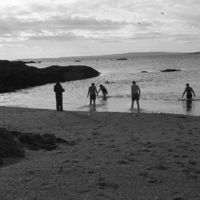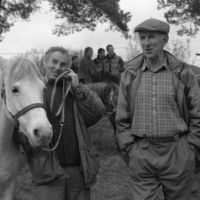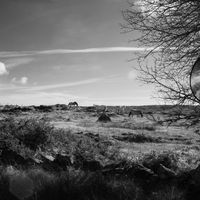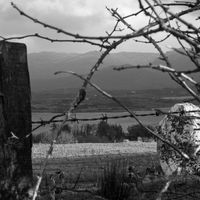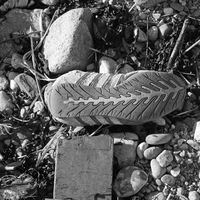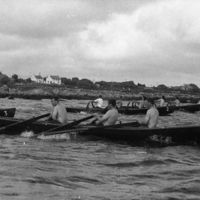Landscape
Tír Eolas
Precursors of Irish Landscape writing loom large in the Irish topographical and geographical imagination (John O’Donovan, Robert Loyd Praeger, E. Estyn Evans occupy hallowed space in this scholarly pantheon). Robinson’s work represents a singular engagement with place framed in his bilingual maps, writings, and publications. Robinson’s writing is not just concerned with the land of landscapes, but also the coastal regions and seascapes of the Irish West, and so is a testament to the rich maritime heritage of the Irish coast and its seascape.
Entry into, and engagement with, the west in Robinson’s work is indebted to both official and unofficial gatekeepers of traditions, learning and language associated with this part of the world. Through conversations with fishermen, postmistresses, school-children and tourists, his work offers a rare view of what it means to journey through and live in the ‘landscape’ of the Irish west – and argues that routes are as important as roots when thinking about how people come to adopt, adapt, and belong to place. Snatches of song are heard and stories retold, observations are noted and sources carefully attributed, and so Robinson makes cartographically visible and textually audible a wide variety of oral, manuscript and material testimonies in his visual and verbal meditations on Aran, the Burren and Connemara.
Radharc Tíre
Robinson’s Irish Landscape is as much about people who lived on it and continue to shape it, as it is about the history and topography of the land itself. As cultural historian, Simon Schama notes in Landscape and Memory (1995), our understanding of this deceptively complex term lies in its European origins. ‘Landcsape’ entered the English language as a Dutch import (along with herring and bleached linen) at the end of the sixteenth century, where landschap became landskip signifying ‘a unit of human occupation, indeed jurisdiction, as much as anything that might be a pleasing object of depiction’ (Schama, 10). The term ‘landscape’ therefore denotes a conjunction of nature and culture – a meeting of people, human engineering and place, embedded in time.
In this, Robinson’s work further challenges our way of thinking about contemporary landscapes in Ireland (if not on a global scale in terms of his writing on the ‘echosphere’) at a time of urgency in world environmental history when considering the impact of the anthropocene, human activity and climate change on the Earth’s ecosystems today (Chakrabarty, 2009). In his writings, along with a questioning of the various kinds of values that can be attached to landscapes (economic, cultural, personal) there are also salutary paragraphs where we are reminded of the responsibility that the present generation has in bearing such gifts from the past safely into future hands.

